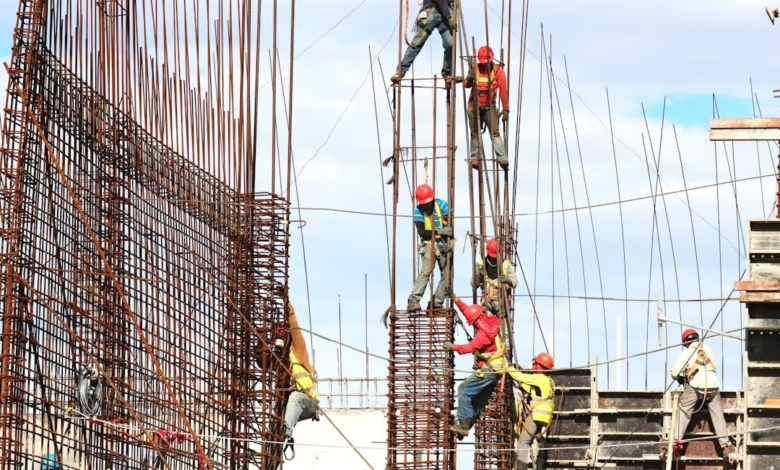Exploring Construction Metals: The Essential Role of Steel, Aluminum, and Their Alloys in Modern Building Projects

In the ever-evolving landscape of modern construction, the importance of metals cannot be overstated. From the skyscrapers that define urban skylines to the bridges that connect communities, construction metals such as steel, aluminum, and various metal alloys play a pivotal role in the durability and functionality of building projects. This article delves into the critical aspects of construction metals, offering insights into the vital contributions of ferrous and non-ferrous metals, including their unique properties and applications. As we explore the role of metals in construction, we will also highlight the growing emphasis on sustainable metal production and recycling, examining innovations in metal fabrication that aim for a greener future. With a focus on everything from base metals like copper and zinc to the rising significance of energy metals and rare earth metals, this comprehensive guide will equip you with a deeper understanding of how construction metals shape our built environment and contribute to advancements in metallurgy and metal mining. Join us as we navigate the intricate world of construction metals and uncover the trends that are defining the industry today.
- 1. The Role of Construction Metals: An Overview of Steel, Aluminum, and Their Alloys in Modern Building Projects
- 2. Ferrous vs. Non-Ferrous Metals: Understanding the Differences and Applications in Construction
- 3. Sustainable Metal Production and Recycling: Innovations in Metal Fabrication for a Greener Future
1. The Role of Construction Metals: An Overview of Steel, Aluminum, and Their Alloys in Modern Building Projects
In the realm of construction, metals play a pivotal role, serving as fundamental materials that enhance the strength, durability, and sustainability of modern building projects. Steel and aluminum are two of the most widely used construction metals, each offering unique properties that cater to various building requirements.
Steel, a ferrous metal, is renowned for its high tensile strength and versatility, making it a preferred choice for structural applications such as beams, columns, and reinforcements. The metallurgy of steel involves iron combined with carbon and other elements to produce various alloys, which can be tailored to specific structural needs. In addition to traditional construction methods, advancements in techniques like metal fabrication and 3D printing metals have further expanded the applications of steel in innovative architectural designs.
On the other hand, aluminum, classified as a non-ferrous metal, is celebrated for its lightweight nature and resistance to corrosion. Its properties are particularly advantageous in modern building projects where reducing overall weight while maintaining strength is crucial. Aluminum alloys, created by combining aluminum with other elements such as copper, zinc, and lithium, enhance performance in diverse applications, including energy-efficient windows and roofing systems.
Both steel and aluminum are also integral to sustainable metal production and metal recycling efforts. The recycling of these industrial metals not only reduces waste but also decreases the demand for virgin metal mining, which is essential for conserving natural resources. Furthermore, as the construction industry increasingly focuses on sustainability, the use of recycled metals can significantly lower the carbon footprint of new buildings.
In addition to steel and aluminum, other metals such as copper, zinc, and lithium are utilized in construction for specific purposes. Copper, known for its electrical conductivity, is often used in wiring and plumbing systems, while zinc is commonly employed as a protective coating to prevent metal corrosion. Emerging trends in the construction industry also highlight the potential of battery metals, which are essential for energy storage solutions in modern buildings.
As the demand for innovative and sustainable building materials continues to rise, understanding the role of various construction metals—including precious metals like platinum and palladium, as well as base metals—becomes increasingly important. The ongoing exploration of metal trends and advancements in metallurgy will pave the way for future developments in construction, ensuring that metal commodities remain at the forefront of building technology.
Ultimately, the strategic use of construction metals like steel and aluminum, alongside a commitment to sustainable practices and recycling, is crucial for addressing the challenges of modern architecture. As industries evolve, the importance of these materials in creating resilient, efficient, and environmentally friendly buildings cannot be overstated.
2. Ferrous vs. Non-Ferrous Metals: Understanding the Differences and Applications in Construction
When it comes to construction metals, understanding the distinction between ferrous and non-ferrous metals is crucial for selecting the right materials for any building project. Ferrous metals contain iron, making them strong and durable, while non-ferrous metals do not contain significant amounts of iron, offering various unique properties and applications.
Ferrous metals, such as steel and cast iron, are known for their high tensile strength and magnetic properties, making them ideal for structural applications in construction. Steel, a common ferrous metal, is widely used in beams, reinforcements, and frameworks due to its ability to withstand heavy loads. However, ferrous metals are more susceptible to metal corrosion, which can lead to structural failures if not properly treated or maintained. This vulnerability highlights the importance of sustainable metal production practices in construction to ensure long-lasting and safe structures.
On the other hand, non-ferrous metals include aluminum, copper, zinc, and precious metals like gold and silver. These metals are generally lighter, more resistant to corrosion, and can be easily fabricated, making them suitable for a range of applications in construction and beyond. For example, aluminum is often used in window frames, roofing, and siding due to its lightweight nature and resistance to rust. Copper is favored for electrical wiring and plumbing due to its excellent conductivity.
In recent years, the trend towards metal recycling has gained momentum, with both ferrous and non-ferrous metals being reclaimed and repurposed for new construction projects. This practice not only reduces waste but also lessens the demand for metal mining, which can have significant environmental impacts. Additionally, advancements in metallurgy and the development of metal alloys have led to the creation of materials that combine the best properties of both ferrous and non-ferrous metals, resulting in innovative solutions for modern construction needs.
In summary, understanding the differences between ferrous and non-ferrous metals is essential for making informed choices in construction. By considering the specific properties and applications of these metals, builders can optimize their projects for strength, sustainability, and efficiency while keeping up with emerging metal trends in the industry.
3. Sustainable Metal Production and Recycling: Innovations in Metal Fabrication for a Greener Future
Sustainable metal production and recycling are crucial for the future of the construction and manufacturing industries, especially as the demand for metals continues to rise. Innovations in metal fabrication are paving the way for a greener future by minimizing the environmental impact associated with metal mining and processing.
The process of metal recycling plays a pivotal role in this sustainable shift. By repurposing industrial metals such as steel, aluminum, copper, and zinc, we can significantly reduce the need for new metal extraction. This not only conserves precious resources but also lessens energy consumption and greenhouse gas emissions. For instance, recycling aluminum saves about 95% of the energy required to produce it from raw materials, making it an attractive option for construction metals.
Advancements in metallurgy have led to the development of more efficient recycling techniques. Technologies like 3D printing metals are revolutionizing how we approach metal fabrication. This method allows for the creation of complex metal alloys with minimal waste, promoting the use of base metals and reducing reliance on rare earth metals and precious metals. Additionally, innovations in the aerospace and automotive sectors are driving the demand for lightweight, high-strength materials, further integrating sustainable practices into metal production.
Moreover, the focus on battery metals, such as lithium and cobalt, is becoming increasingly important in the context of sustainable energy. As the shift towards electric vehicles and renewable energy sources accelerates, the need for responsible sourcing and recycling of these materials is paramount. The industry is now exploring new ways to extract and recycle these metals, ensuring a sustainable supply chain for future generations.
Overall, the trends in sustainable metal production and recycling reflect a broader commitment to environmental stewardship. As the construction industry evolves, embracing these innovations will not only support the growth of metal commodities but also contribute to a more sustainable future for all sectors reliant on metals. By prioritizing metal recycling and investing in advanced fabrication techniques, we can enhance the lifecycle of metals while reducing the ecological footprint associated with their use.
In conclusion, construction metals play a pivotal role in the modern building landscape, with steel and aluminum leading the charge as essential materials due to their strength, versatility, and adaptability. Understanding the distinctions between ferrous and non-ferrous metals is crucial for selecting the appropriate materials for various construction projects, as each type brings unique properties and applications to the table. Furthermore, the industry's push towards sustainable metal production and recycling is not only a response to environmental concerns but also an opportunity to innovate in metal fabrication processes.
As we look to the future, trends such as 3D printing metals and advancements in metallurgy will continue to shape the construction sector, enhancing efficiency and sustainability. The integration of base metals like copper and zinc, alongside rare earth and energy metals such as lithium and platinum, will further diversify the materials available for construction. By prioritizing sustainable practices in metal mining and recycling, the construction industry can significantly reduce its carbon footprint while ensuring a steady supply of high-quality metals for generations to come. Whether you are investing in gold, silver, or other metal commodities, understanding the role of these metals in construction is essential, as their value and demand will undoubtedly influence the broader economic landscape.
Overall, embracing innovative practices in metal usage will not only enhance the quality and lifespan of construction projects but also support a greener future in the building industry.





